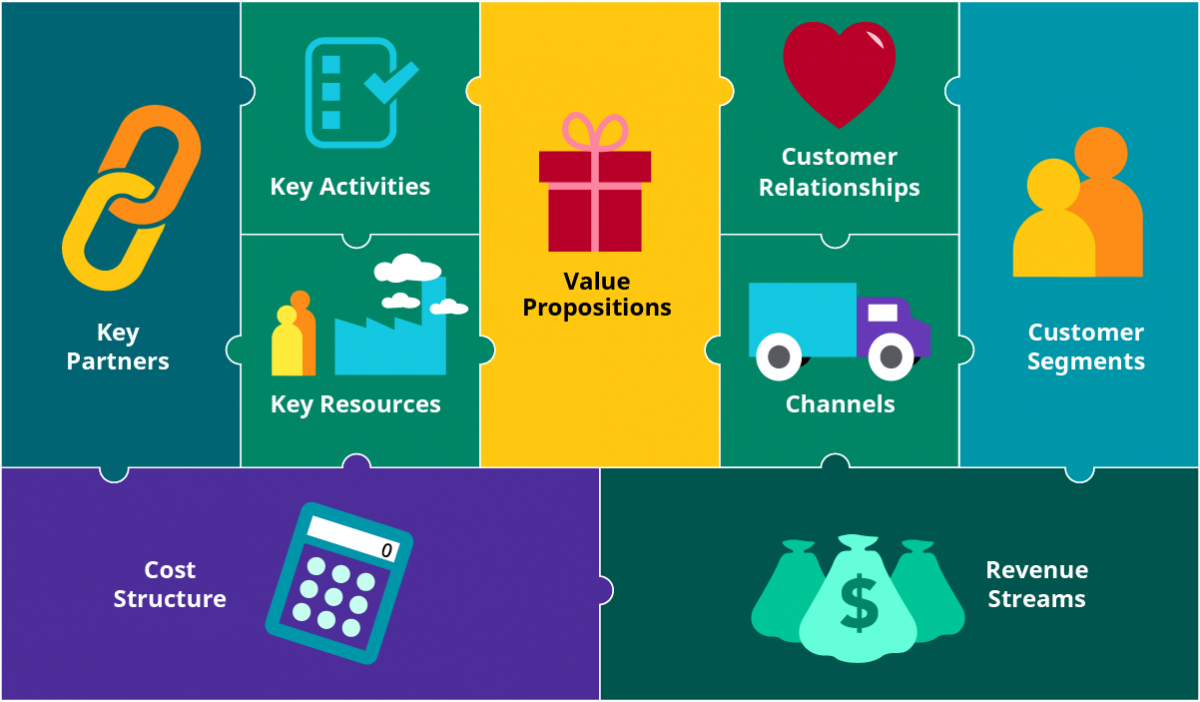If you ask any two CEOs what makes a good business model, it’s likely you would get two completely different answers. Despite business models being the cornerstone of any company’s development, there is surprisingly little consensus on what they are and what they can do.
But one thing is certain: business models are a powerful tool, which when honed and harnessed can be instrumental in establishing and evolving everything from small start-ups to major corporations.
Clarifying the model
Acknowledging a disparity in understanding, Alexander Osterwalder and Yves Pigneur set out to define the concept, the usage and the benefits of a business model. After laying the groundwork in their 2005 report ‘Clarifying business models’, the professors progressed their influential ideas in their top-selling 2010 book, Business Model Generation.
It was through this ground-breaking work that the idea of the business model canvas was born.
Expanding the canvas
Following a review of business literature, centred on business model implementation in information systems, Osterwalder and Pigneur found that the business model was composed of nine core components:
- Customer Segments – Specifies the customer segments a company wants to offer value to, covering simple users and paying customers.
- Value Proposition – An overall view of a company’s bundle of products and services.
- Distribution Channels – Illustrates the various means that a company can use to get in touch with its customers.
- Customer Relationships – Details the kind of relationship a company wants to establish between its different customer segments.
- Revenue Streams – Outlines the pricing mechanisms through which a company makes money through its revenue flows.
- Key Resources – Describes the infrastructure available to create, deliver and capture value.
- Key Activities – Describes the arrangement of activities necessary to optimise performance.
- Key Partners – Portrays the network of cooperative agreements with other companies necessary to efficiently offer and commercialise value.
- Cost Structure – Sums up the monetary consequences of the means employed in the business model.
When mapped out as a canvas, these components can be combined to create a tool for business leaders and entrepreneurs to quickly and easily, plan, visualise and communicate a business model.

The benefits to business
Through their research and development of the business model concept, Osterwalder and Pigneur identified five functional areas of business where such modelling was key:
- Understanding and sharing – Business model concepts are instrumental in helping to capture, visualize, understand, communicate and share business logic.
- Analysing – Supporting the analytic process, business model concepts can improve the measuring, observing and comparing of business logic.
- Managing – Business model concepts can aid the management of a company’s business logic by facilitating the design, planning, changing and implementation of business models. They can help leaders react faster to changes in the business environment, while aligning strategy and technology.
- Prospects – By detailing possible company features, the business model concept can encourage innovation, and future-proof business model planning through simulation.
- Patenting – Modelling can also support the legal aspects of business, by giving entrepreneurs a means to patent unique processes and aspects of the business model.
Business modelling In practice
The University of Bath’s Entrepreneurship Management and Innovation online MSc course draws on a range of different business models. Alongside learnings from its extensive research, and industry expertise, the course applies Osterwalder and Pigneur’s research, inspiring students to reflect on business in new and inventive ways.
It’s through understanding these innovative business concepts, that students learn to develop a unique approach to tackling and solving business issues. This prepares them for whatever the real-world business environment throws at them.
Previous graduates of the campus course have gone on to apply the business model canvas to establish businesses from sectors as diverse as environmental and analytics to investment banking and consultancy.
Discover your unique entrepreneurial style by taking part in this interactive Kinetic Thinking Assessment. This forms part of the first unit of the Entrepreneurship Management and Innovation online MSc.
Shaped for the future
Through their studies and development of the business model concept, Osterwalder and Pigneur have contributed significantly to the understanding, design and analysis of business the world over. Together, they demonstrated that the business model concept is the foundation for entrepreneurial thinking, and therefore the foundation for successful business enterprise.
Explore innovative frameworks, such as the business model canvas, by applying to the University of Bath’s Entrepreneurship Management and Innovation online MSc. Request information today by completing the form below.